On May 22, dozens of experts and scholars in the construction and civil engineering industry and more than 180 teachers and students from 17 colleges and universities from Beijing and beyond participated in the 10th Beijing Architectural Structure Design Competition for College Students hosted by the Beijing Municipal Education Commission and organized by the Beijing University of Civil Engineering and Architecture (BUCEA) at BUCEA’s Daxing Campus.

JIANG Zeting, Secretary of the CPC Committee of BUCEA, came to the site for guidance and had cordial conversations with judges, instructors and contestants. He inquired about the design concept and design process of each team’s works. He pointed out that the competition offers an excellent platform for teachers and students to practice and communicate, which has promoted education and teaching reform in related disciplines. He hoped that the students can grasp opportunities and meet national requirements by continuously improving their scientific literacy and scientific innovation ability and striving to grow into national talents.
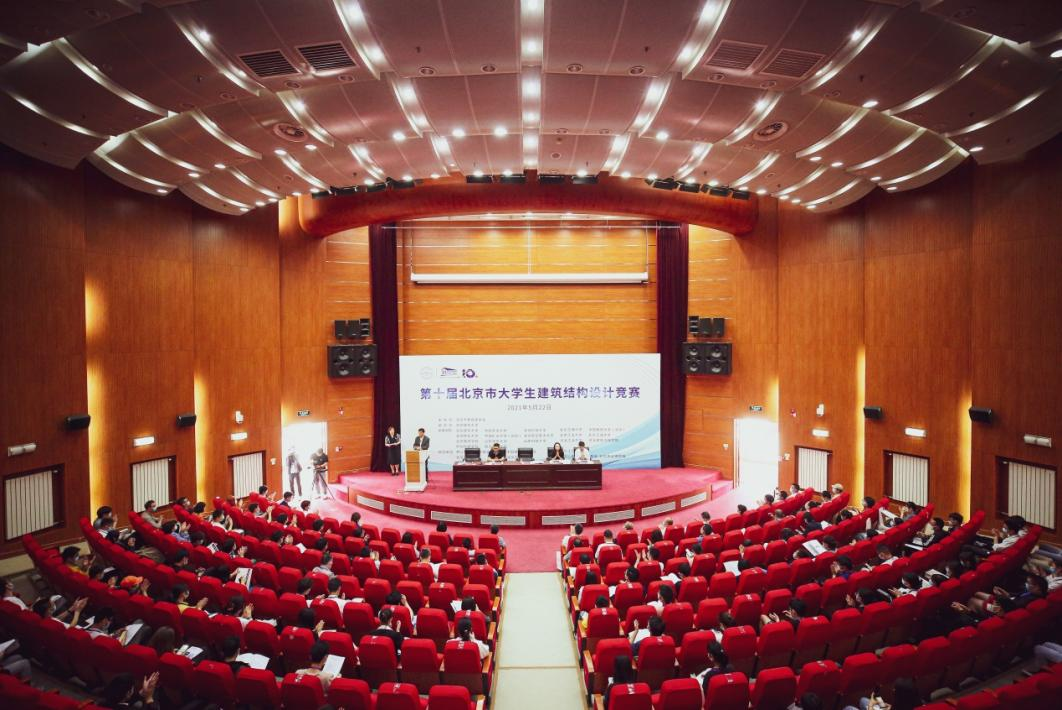
Opening Ceremony of the 10th Beijing Architectural Structure Design Competition for College Students
LI Junqi, Vice President of BUCEA, ZHU Jing, Director of the Party and Administration Office and Vice Minister of the United Front Work Department of BUCEA, CHEN Hongbing, Director of the Academic Affairs Office, and HAN Miao, Secretary of the CPC Committee of the School of Civil and Transportation Engineering attended the opening ceremony of the competition, which was presided over by WEI Wei, Secretary of the Communist Youth League Committee of BUCEA.
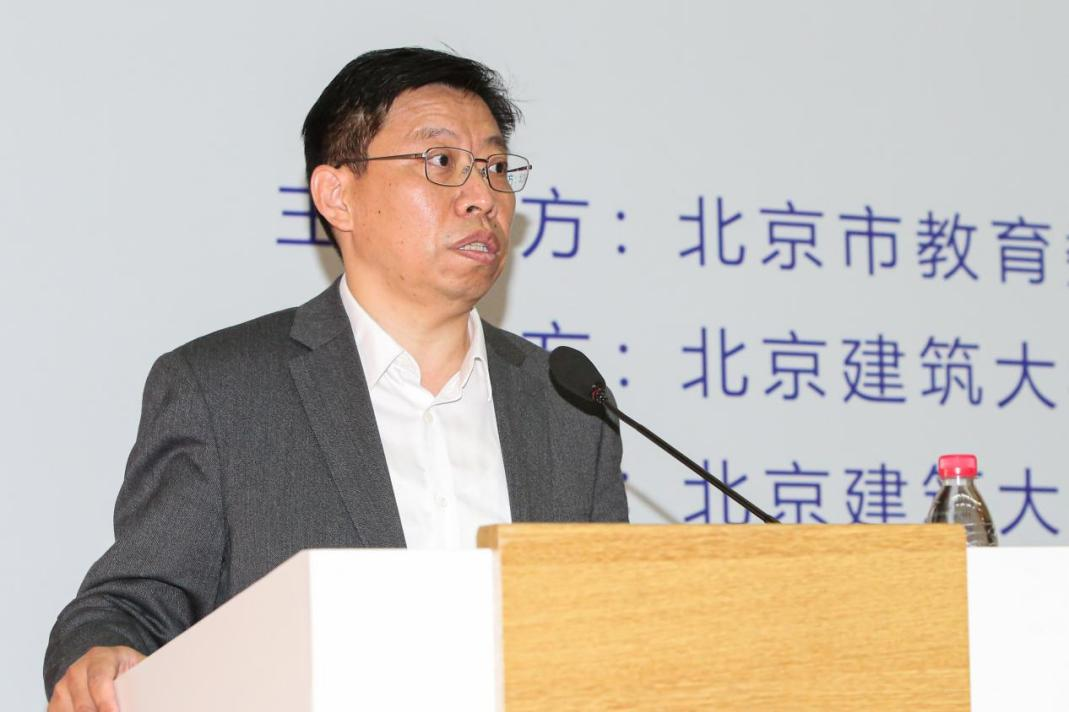
President LI Junqi said that the key to building a first-class university is to focus on improving the capability of talent cultivation by cultivating students with high level of scientific and technological innovation who can take on the great responsibility of national rejuvenation. He hoped that the competition will build a scientific and technological innovation and exchange platform for students, strengthen the communication among universities, and inspire innovative ideas in students to cultivate more talents for the construction industry and national rejuvenation, and contribute to a promising future for the country.
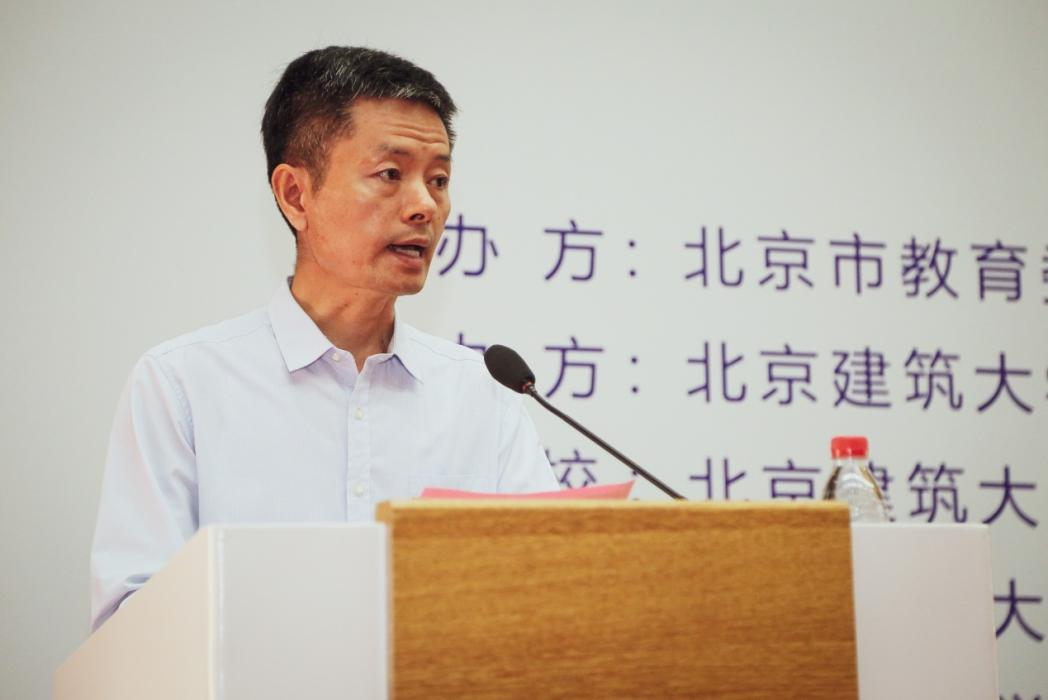
HAN Miao elaborated on the participation of the competition, the setting of
questions and the organization of the competition.

LIU Nengwen, a professor-level senior engineer from Beijing General Municipal Engineering Design & Research Institute Co., Ltd., on behalf of all the judges, promised to strictly abide by the rules of the competition and the discipline of the judges, and make strict evaluation and fair evaluation.
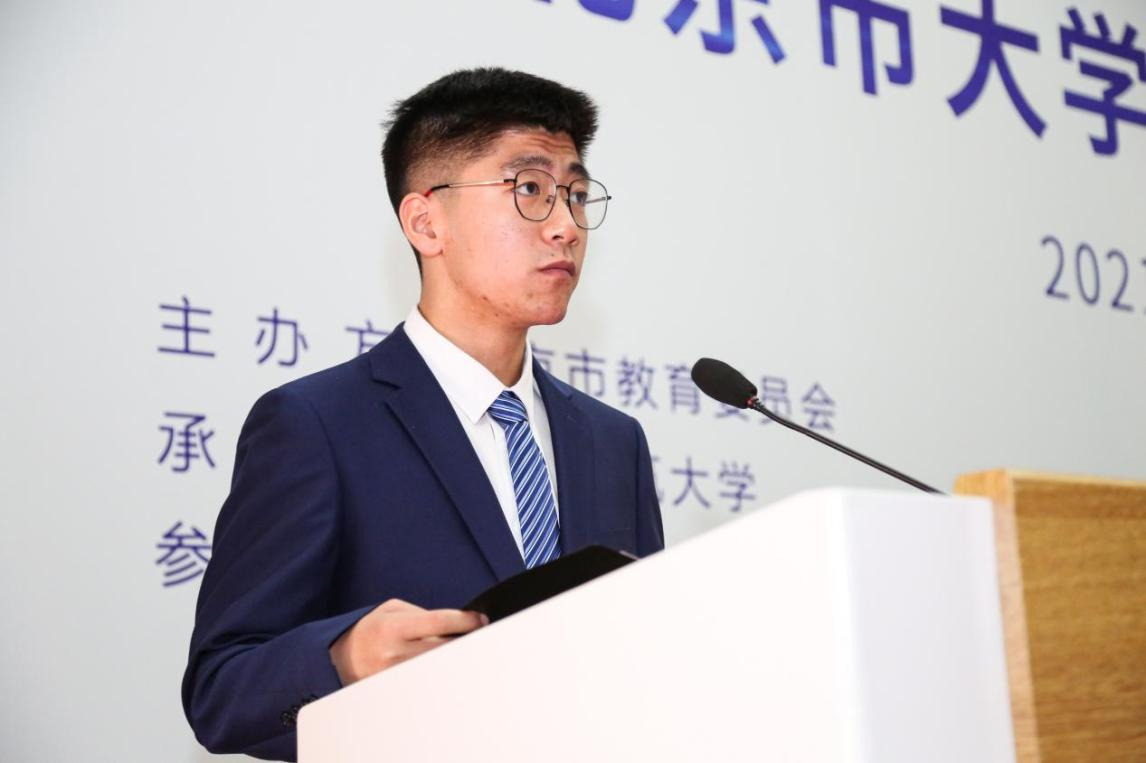
GUO Jianjun, a student at the School of Civil & Transportation Engineering of BUCEA, thanked the expert judges and the competition preparation team on behalf of all the contestants, and swore that he would abide by the competition discipline and bring out his best performance in the competition.
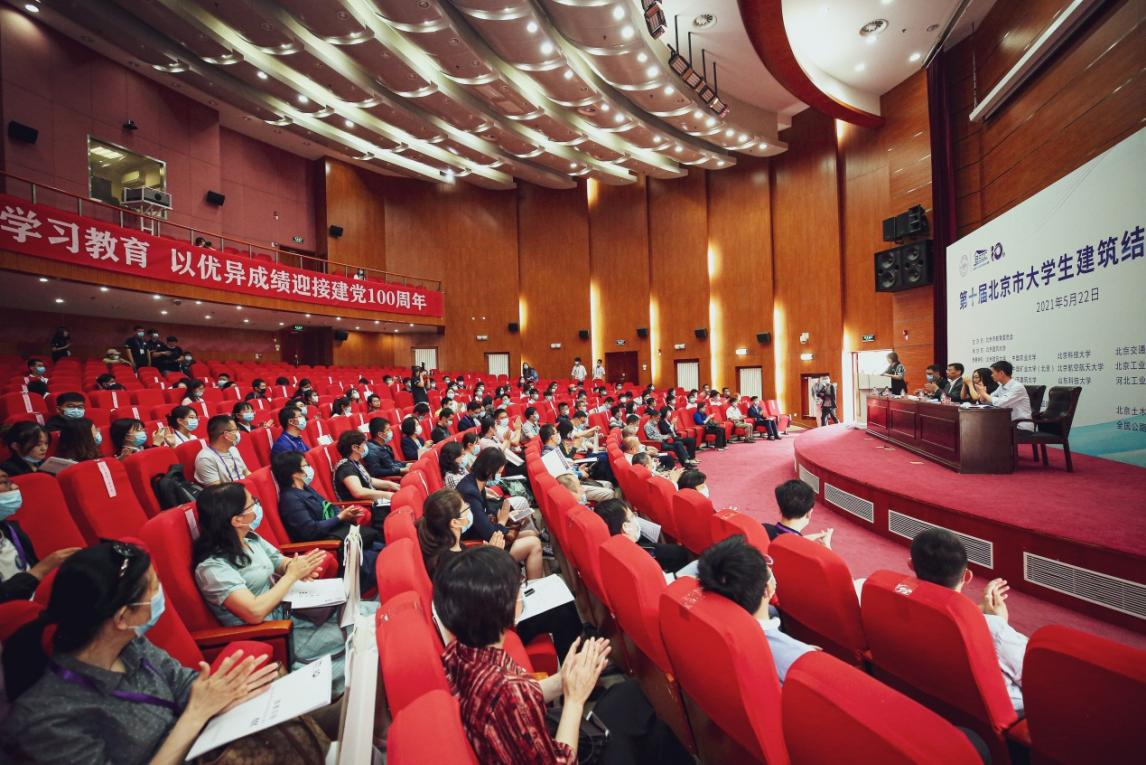
The contestants were divided into three groups: Group A, Group B-Structure, and Group B-Bridge, and with each group competing at the same time in different venues. The competition questions, which are based on actual engineering projects under bidding to better reflect the real situation, are aimed at improving students’ innovation and practice ability, and require a skillful and creative use of professional knowledge and skills to solve real problems in engineering practice.
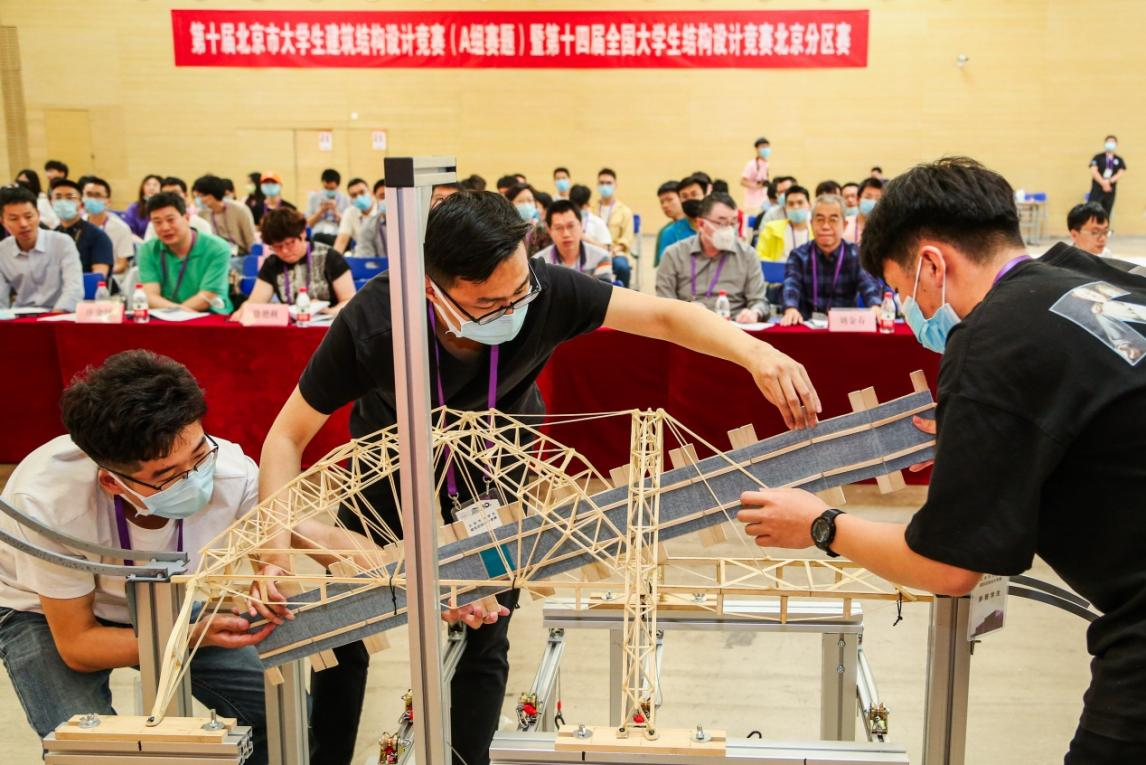

Group A Competition Venue
The question for Group A requires contestants to design a bridge that takes the vertical concentrated static load and moving load of the bridge deck. Based on the bridge structures under vertical static and moving loads, the question shows more flexibility by adding some undetermined parameters and emphasizes the comprehensive requirements on the comprehensive ability of future excellent engineers with the design element. This way, the contestants have to control the deformation of the model while ensuring its safety.
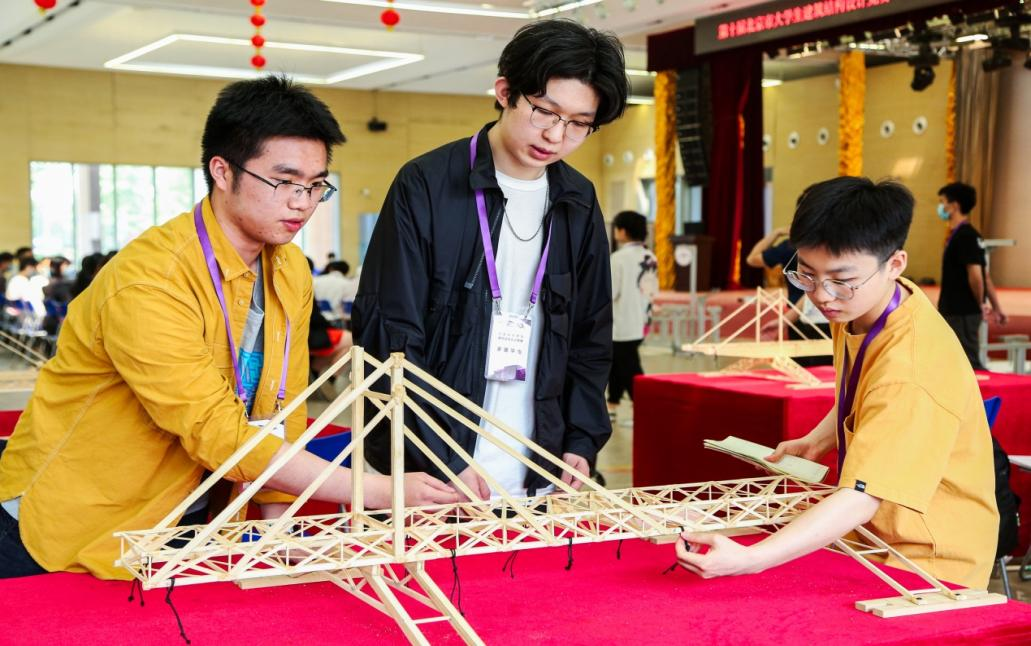
Group A Students Prepare for the Competition
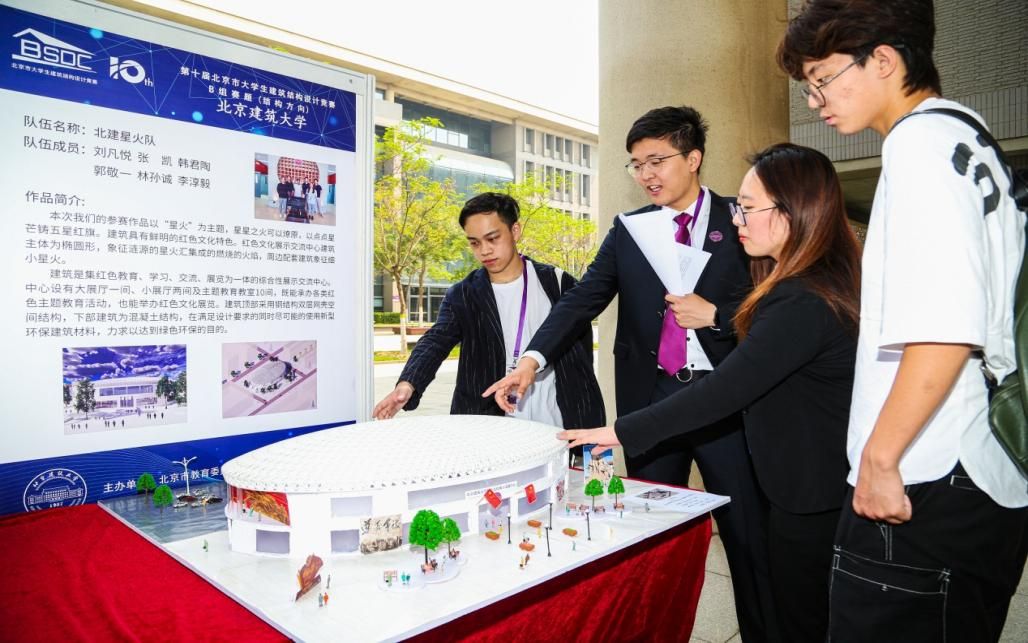
Group B Structure Contestants Introduce Their Works
Themed “the Celebration of the 100th Anniversary of the Founding of the Communist Party of China”, the question for Group B Structure requires participants to design a “Red Culture Exhibition and Exchange Center”, which will be a comprehensive exhibition and exchange center integrating the education, learning, communication and exhibition of “Red Culture”. It can not only host all kinds of red-themed educational activities, but also hold red culture exhibitions. By learning the 100-year history of the Party, the students were inspired to design a cultural display exchange center some in the form of a five-pointed star, which resembles a red army hat and reflects the revolutionary spirit of brave revolutionists.
LIU Fanyue and her BUCEA team designed an elliptic-shaped culture exhibition center with the theme of “Spark”. “Our work follows the design of sparks turning into burning flames. The peripheral architecture is a symbol of tiny sparks, which are set to start a big fire and reflect the five-star red flag”, she said.

Group B Bridge Participants Take Questions from Judges
The question for Group B Bridge requires competitors to design a landscape bridge on the scenic rural tourism route, taking the construction of beautiful countryside around Beijing as an opportunity, and in combination with the development requirements of “Beijing-Tianjin-Hebei Integration Strategy”. LI Jinyang, a contestant from BUCEA and his classmates designed the Bridge of Unity. With the professional knowledge they learned in class and the materials they consulted after class, they completed the model design and production under the guidance of the teacher, making the innovative design of the cable-stayed truss bridge for the bridge.
On its tenth anniversary, the competition has grown into a relatively high-level and influential college students' science and technology competition. The competition is designed to promote exchanges and cooperation among universities and improve the innovation consciousness and practice of students. It has offered a platform for training high-quality engineering designers to meet the challenges of the future by focusing on the construction of special advantage disciplines and discipline peaks.
Thirty-seven teams from 11 Beijing-based and 6 non-Beijing based colleges and universities were shortlisted for the final competition, including Beijing University of Civil Engineering and Architecture, China Agricultural University, Beijing University of Science and Technology, Beijing Jiaotong University, China University of Geosciences (Beijing), Beijing Forestry University, China University of Mining & Technology (Beijing), Beihang University, Beijing University of Technology, North China University of Technology, Beijing City University, Shandong Jianzhu University, Shandong University of Science and Technology, Hebei University of Technology, Hebei University of Architecture, North China Institute of Science and Technology, Institute of Disaster Prevention.
